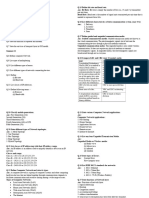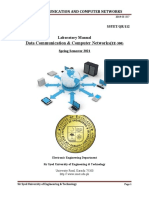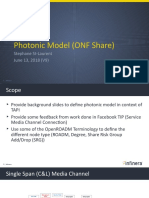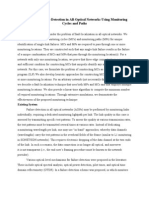0% found this document useful (0 votes)
25 views3 pagesNetworking Answers
The document provides answers to various networking questions, covering topics such as network topology, IEEE 802X standards, mobile generations, multiplexing types, and differences between networking devices like repeaters and routers. It also includes comparisons between IPv4 and IPv6, an explanation of the OSI reference model, and a description of DHCP configuration. Additionally, it outlines a network layout design for an organization with five departments.
Uploaded by
suyashmeshram61Copyright
© © All Rights Reserved
We take content rights seriously. If you suspect this is your content, claim it here.
Available Formats
Download as PDF, TXT or read online on Scribd
0% found this document useful (0 votes)
25 views3 pagesNetworking Answers
The document provides answers to various networking questions, covering topics such as network topology, IEEE 802X standards, mobile generations, multiplexing types, and differences between networking devices like repeaters and routers. It also includes comparisons between IPv4 and IPv6, an explanation of the OSI reference model, and a description of DHCP configuration. Additionally, it outlines a network layout design for an organization with five departments.
Uploaded by
suyashmeshram61Copyright
© © All Rights Reserved
We take content rights seriously. If you suspect this is your content, claim it here.
Available Formats
Download as PDF, TXT or read online on Scribd
/ 3





















































































